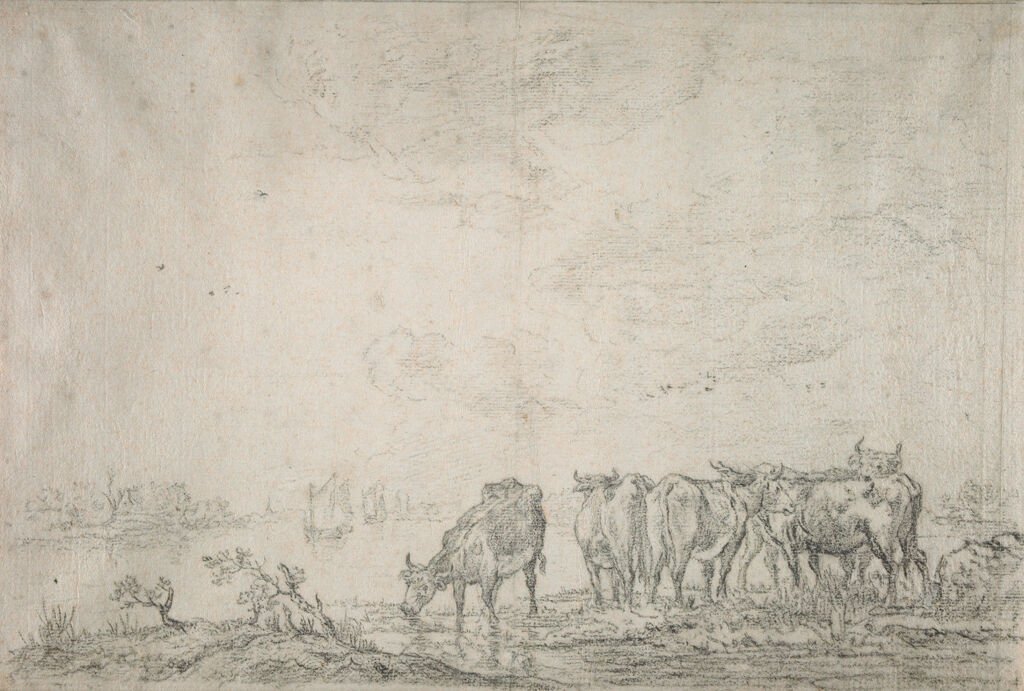Real or Fake #5
Thursday, 1 February 2024. Newsletter 5.
Can we fool you? The term “fake” may be slightly sensationalist when it comes to old drawings. Copying originals and prints has formed a key part of an artist’s education since the Renaissance and with the passing of time the distinction between the two can be innocently mistaken.
In response to comments labelling a previous Real or Fake section “too easy”, the ante has been upped here. Top marks if you can crack this one and show your working.
Scroll to reveal the answer.
You may have guessed that this was a trick question, but just how many levels of trickery did you ascertain? Pictures produced in reverse often denote the use of reproductive media: an engraving or a counterproof - a counterproof is created when a drawing or print is passed through a roller press beneath a dampened piece of paper. This case contains both processes. Whilst the left-hand drawing is indeed a counterproof of the right-hand one, neither is truly an original drawing. The right-hand drawing is in fact a copy of an 18th century engraving by Henricus Josephus Antonissen (1737-1794), and Antonissen’s engraving is a reproduction of a 17th century painting by Aelbert Cuyp (1620-1691). Simple.
The mastermind behind this, and many similar examples of deceit, has been identified as Karel la Fargue (1738-1793), an 18th century forger who produced drawings in the style of 17th century Dutch Masters, using motifs borrowed directly from paintings, prints and drawings. Originally la Fargue’s homage to these earlier artists was fairly innocent, however as time wore on la Fargue began to forge signatures and monograms, leaving no doubt as to his true intentions. In order to maximise his profits, la Fargue would often produce counterproofs of these forgeries, which he would then work up in colour and sell on as original drawings. There is in fact a second counterproof of this example, a more highly worked-up sheet than the given example, although good images were impossible to locate. One drawing for the price of three!
Karel la Fargue’s “original copy” is at the Albertina, Vienna (inv. no: 10736)
Karel la Fargue’s counterproof is at the Harvard Art Museums, Cambridge (inv. no: 1932.204).
The whereabouts of the second counterproof are unknown; formerly coll. F. Adda, his sale Paris (Galliera), 29 November- 3 December 1965, lot 79, repr. (as A. Cuyp).
Aelbert Cuyp’s original painting is in London, Mansion House, The Corporation of the City of London, The Harold Samuel Collection.
For a full breakdown of Karel la Fargue’s activities I would urge readers to consult Charles Dumas and Michiel C. Plomp’s catalogue in Oud Holland (C. Dumas and M. C. Plomp, ‘Karel la Fargue (1738-1793) as a forger of seventeenth-century Dutch drawings’, Oud Holland, 1998, Vol. 112, No. 1 (1998), pp. 1-76).


